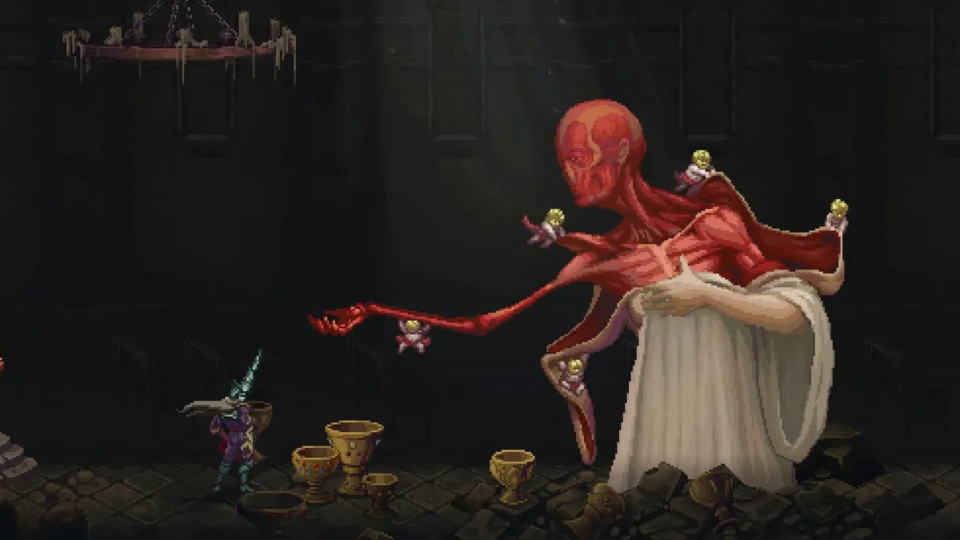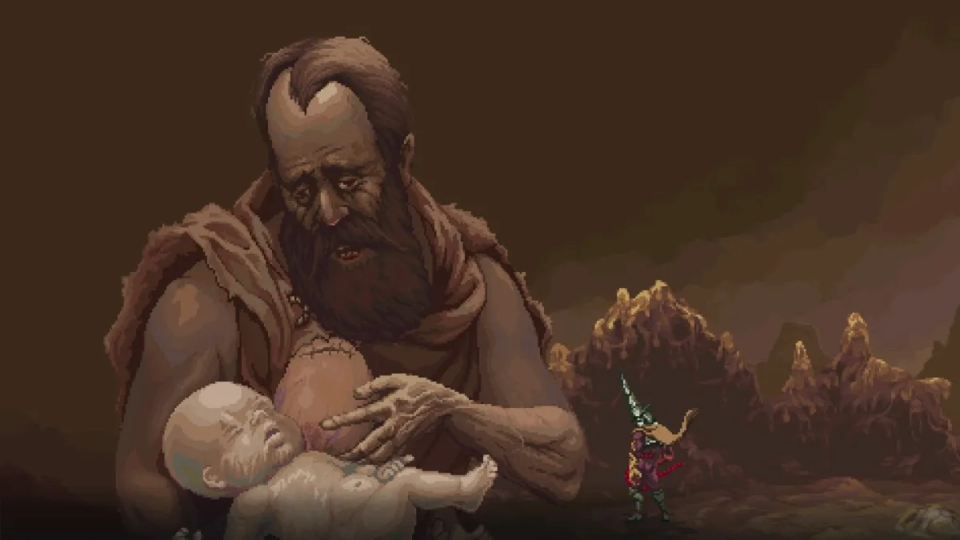‘Blasphemous 2’ Review: Hell Has Never Looked So Good

Despite having been raised in a religious setting and even attending Catholic school, I grew up with a certain uneasiness surrounding certain forms of Christian imagery. From paintings of tormented saints to overly detailed depictions of the crucifixion process, religion boasts plenty of morbid iconography that could easily become nightmare fuel in a child’s highly impressionable mind.
I’m obviously not the only one who went through this. Spain-based videogame developer The Game Kitchen has managed to turn this specific form of religious dread into the basis for one of the most memorable Metroidvania titles in recent memory with 2019’s Blasphemous. Thankfully for fans of their gothic throwback, the developers have returned with Blasphemous 2, the much-anticipated sequel that aims to up the ante when it comes to Andalusian-inspired thrills.
If you’re not familiar with the Blasphemous series, both games take place in the fictional kingdom of Cvstodia after a so-called “miracle” has ravaged the land with supernatural phenomena and mutated monstrosities. The resurrected Penitent One is the only warrior capable of fighting back against the powers that orchestrated this apocalyptic event. In the sequel, the Penitent One must once again rise from his grave and prevent the return of the miracle and its newborn “child” many years after the events of the first game.
Also Read: ‘Haunting Ground’: An Overlooked Feminist Survival Horror Masterpiece

Naturally, this new quest once again takes the form of a retro adventure through two-dimensional castles and haunted forests, with the player having to backtrack through interconnected locations as they gain additional abilities and unlock new areas—all the while fighting horrific monsters and acquiring new weaponry. However, I’d argue that Blasphemous 2 is even more of a throwback than its predecessor, with the title embracing the balanced exploration and general freedom of choice present in classic Metroidvanias instead of focusing on the Souls-like difficulty curve present in the first game.
This is especially appropriate given the title’s horrific subject matter, as the Metroidvania genre has always had its roots in horror (be it Dracula and the Universal Monsters in Castlevania: Symphony of the Night or the Alien-inspired thrills of classic Metroid). While more recent years have seen the rise of family-friendly Metroidvanias like Ori and the Blind Forest and Steamworld Dig, it’s nice to know that some developers still insist on keeping these addictive adventures scary.
Also Read: ‘P.T.’ is The Scariest Video Game That Never Was
Of course, there are also some deeper changes to the game’s mechanics that may not be to everyone’s liking. While the inclusion of three main weapons instead of one sounds good on paper—with the player being able to acquire them in any order—it also means that nearly the entire game has to be balanced for three incredibly different play-styles at any given moment, with this added complexity coming at the expense of challenge and curated tension. That’s not to say that Blasphemous 2 is an easy game, especially when it comes to the blood-pumping boss battles, but it’s certainly less demanding than the original.
There’s also the matter of the game’s updated cut-scenes. The original title’s barely animated slideshows of gorgeous pixel art may have been primitive, but they felt a lot more in line with the rest of the game’s retro aesthetics than the sequel’s smoothly animated artwork. That being said, the narrative here remains just as esoteric as the first game’s, requiring multiple visits to the Blasphemous Wiki page if you really want to understand everything that’s going on.
Also Read: How ‘Detention’ Became Cinema’s Greatest Video Game Adaptation
Presentation-wise, everything from the haunting orchestral score to the Clive-Baker-esque monster designs are at least just as good in the sequel, but I think the law of diminishing returns might also apply to video game shock value. Facing a boss meant to look like an unsettling rendition of an evil baby Jesus just isn’t quite as terrifying the second time around, and many of these locations just feel like more of the same when compared to the first game.
Even so, I appreciate eerie little details like how Our Lady of the Chalices slowly has her skin removed as she upgrades your bile flasks—not to mention disturbing side-quests like finding surrogate wax mothers for a single father who nurses his gigantic baby with a stolen breast. One of my personal favorite moments occurred once I unearthed an entire sunken city that would feel right at home in a Lovecraft story and marveled at the sheer scale of the title’s interconnected map.

The game may not be perfect, suffering from a few familiar Metroidvania pitfalls when compared to its predecessor, but I’m fairly certain that horror fans will dig The Game Kitchen’s latest attempt at gamifying faith-based horror. Not only is it a more polished and balanced experience, but it also rewards active exploration instead of punishing it, making this a great choice for players who want to lose themselves in heretic hellscapes and fight enemies that look like they were plucked directly from Dante Alighieri’s worst nightmares.
Summary
‘Blasphemous 2’ is not only a more polished and balanced experience, but it also rewards active exploration instead of punishing it, making this a great choice for players who want to lose themselves in heretic hellscapes.
Categorized:Reviews

